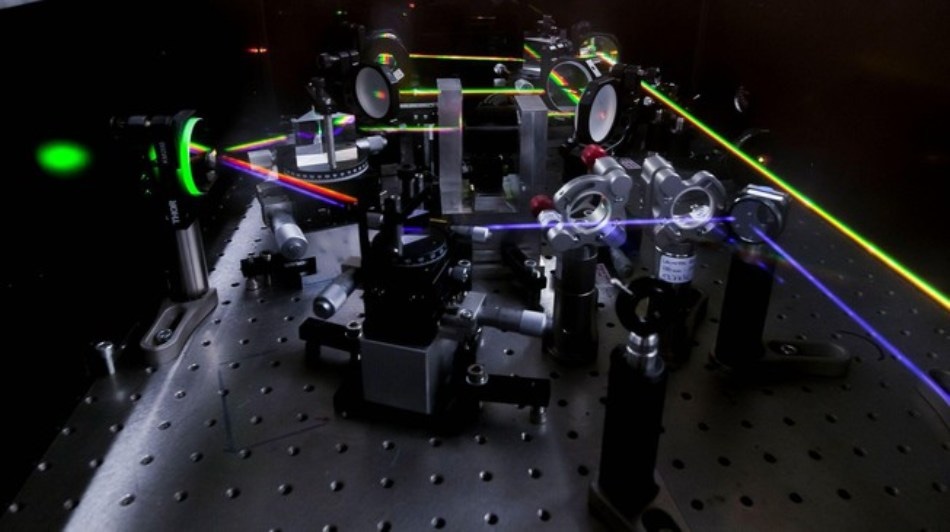Aug 3 2018
Anatase titanium dioxide is a cheap and abundantly available material. Now, a novel property of this material has been revealed by researchers from EPFL, Germany and France that holds potential applications as a medium for room-temperature sensors of mechanical stress at the nanoscale and with an optical read-out.
 The ultrafast two-dimensional deep-ultraviolet spectroscopy setup at EPFL used for the experiments on anatase TiO2 nanoparticles. (Image credit: Francesco Pennacchio)
The ultrafast two-dimensional deep-ultraviolet spectroscopy setup at EPFL used for the experiments on anatase TiO2 nanoparticles. (Image credit: Francesco Pennacchio)
In materials science and engineering, determining mechanical stress in the nano-world is a significant challenge. Integral to this development is the ability to integrate inexpensive nanomaterials that respond to mechanical stress and basic detection schemes. The development of nano-sized sensors with an optical read-out is a promising route. Yet, no known nano-materials exist that can alter their light-absorbing properties when applied with mechanical stress in a simple, predictable manner, particularly at room temperature. Such types of materials would be very useful in several sensing applications, right from metrology to bioscience.
In a twist, the laboratory of Majed Chergui at EPFL within the Lausanne Centre for Ultrafast Science, in association with the theoretical teams of Pascal Ruello at the Université de Le Mans and Angel Rubio at Max-Planck (Hamburg), has shown that the field can be transformed by nanoparticles of the anatase polymorph of titanium dioxide.
Being a cheap and abundant material, titanium dioxide is already being used in many different applications including photocatalysis, photovoltaics, paints, sunscreen, transparent conductive substrates, water and air purification. The researcher’ latest finding, reported in Nano Letters, Chergui and his coworkers demonstrate that titanium dioxide is the most favorable candidate for creating room-temperature nanosensors of strain with an optical read-out.
In their experimental setups, the scientists first introduced a mechanical stress wave within titanium dioxide nanoparticles at room temperature and then observed their optical response in the vicinity of the material’s main absorption band knows as “exciton”. They discovered that under the applied mechanical stress, the latter experiences a change of intensity. However, this basic response does not correlate with the behavior of all the materials known, whose optical responses to mechanical strain are both unpredictable and complicated. These latest discoveries present new opportunities to develop nanosensors with an optical read-out built on one laser frequency adjusted to the exciton resonance.
Since titanium dioxide is already integrated in a wide variety of devices and there is extensive expertise available for integrating it with other systems, these latest findings could lead to a new class of optical sensors of mechanical stress at the nanoscale.
This observation was made possible thanks to our novel ultrafast laser techniques in the deep-ultraviolet. We expect our experimental method to lead to even more exciting discoveries in the nano-world in the near future.
Edoardo Baldini, First Author